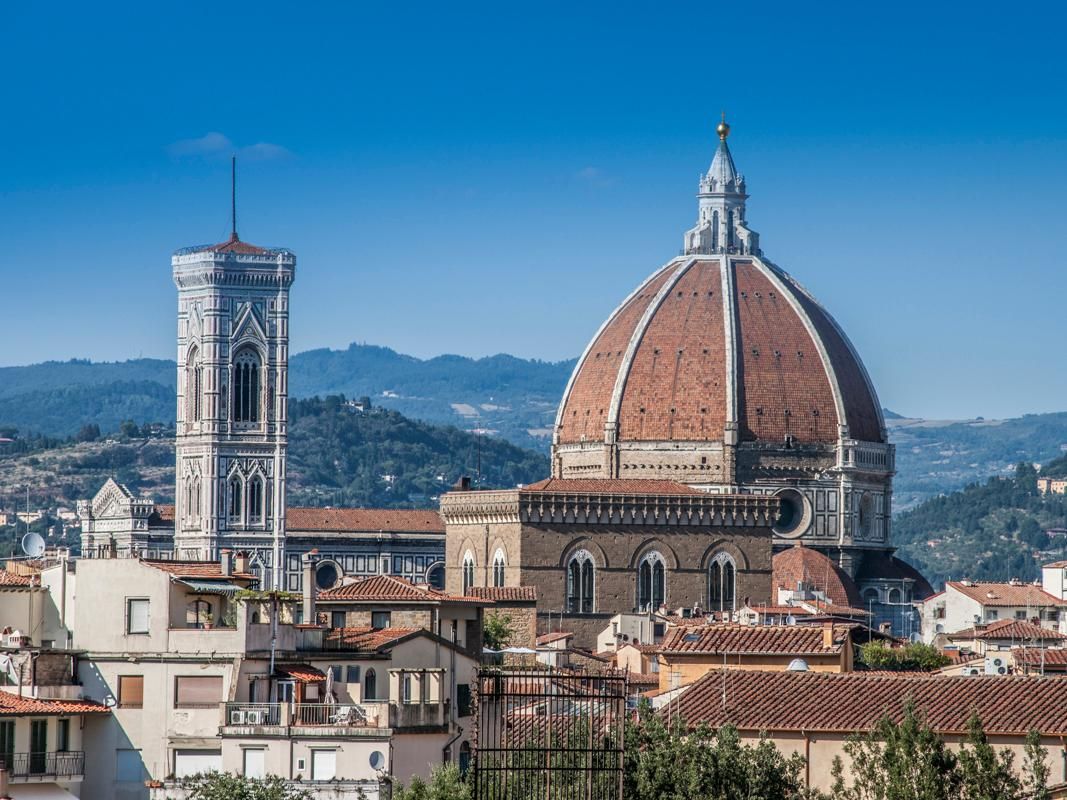Italy’s Museums Reopen With Vibrating Social-Distancing Necklaces, Limited Admission
A guard will “chaperone” groups of six through the Scuderie del Quirinale’s blockbuster Raphael exhibition
:focal(1886x1090:1887x1091)/https://tf-cmsv2-smithsonianmag-media.s3.amazonaws.com/filer/8d/3f/8d3f6d36-c3e9-4787-82b0-49a2e40e3ddb/gettyimages-1205265816.jpg)
As Italy relaxes its stay-at-home-orders, museums are beginning to reopen with new safety measures that allow visitors to enjoy the country’s culture while reducing the risk of the novel coronavirus’ transmission.
A major Raphael exhibition shuttered just three days after its March opening has been rescheduled for June through August, reports Cristina Ruiz for the Art Newspaper. Ticket holders must reserve a time slot; upon arriving at Rome’s Scuderie del Quirinale, visitors will be sorted into groups of six and escorted through the galleries by a guard acting not as a guide, but as a “chaperone … responsible for the safety of the group,” says museum director Matteo Lafranconi.
At Florence Cathedral, electronic devices worn on lanyards will notify visitors if they’re standing too close to their neighbors by vibrating and lighting up, reports Kate Brown for artnet News.
The cathedral explained the new technology in a video posted on YouTube this week. Crafted by Italian company Advance Microwave Engineering, the rectangular devices can sense when they are within roughly six feet of each other. If users are too close for comfort (and safety), their necklaces will begin to flash and vibrate much like a noisy cell phone or restaurant pager.
“[I]t won’t be a question of evaluating the distance a bit vaguely,” Timothy Verdon, director of the cathedral’s museum, tells Mandi Heshmati of France 24. “By wearing it, the visitor will feel the sensor with a vibration and a sound that will inform him that he’s too close to another person.”
Visitors will receive a lanyard upon entry and return it when departing the cathedral. All devices will be thoroughly disinfected prior to reuse.

Combined with plans to drastically reduce the number of visitors allowed into the space, the technology “guarantees the maximum of security and comfort,” says the cathedral in a statement quoted by artnet News. The house of worship—known for its innovative red-brick dome, designed by architect Filippo Brunelleschi in the early 15th-century—usually welcomes about 2,600 people each day, but due to COVID-19, the new daily limit is just 200.
“We are very worried,” a cathedral spokesperson tells artnet News. “For the Opera di Santa Maria del Fiore, the private institution that owns the monuments of the Duomo of Florence, it is a dramatic situation because our earnings all come from the tickets sold, we have no state contributions.”
Cultural institutions around the world—including Shakespeare’s Globe in London, which recently warned British lawmakers that it may have to close permanently if it does not receive financial assistance—share similar funding concerns.
As museums begin to reopen, many are requiring visitors to book tickets in advance, wear masks, use hand sanitizer upon entering or undergo temperature checks, according to Fortune. In Munich, the Bavarian State Painting Collections’ museums are limiting the number of visitors to one person per roughly 215 square feet, reports CNN’s Karina Tsui. At the Giacometti Institute in Paris, meanwhile, just ten people are allowed in every ten minutes, and public bathrooms remain closed.
New safety measures at Turin’s Castello di Rivoli Museum of Contemporary Art include predesignated walking paths, timeslotted tickets and temperature checks before guided tours. Director Carolyn Chrystov-Bakargiev tells artnet News that the museum—which reopened on May 19—lost just over $1 million during the shutdown. It has since invested about $65,000 in sanitation upgrades.
“Museums are carefully controlled spaces that have been designed to protect artworks from people,” says Chrystov-Bakargiev. “To adapt that to protecting people from people is a small step.”